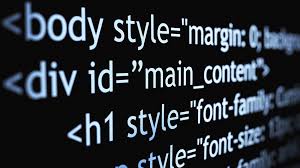Why Print Textbooks Will Never Die

There is no doubt that the popularity of digital materials has increased dramatically over the last decade as schools have adopted one-to-one digital device programs and the availability of digital textbooks has skyrocketed. Public policy is also pushing the adoption of digital materials as states such as California and Florida have passed legislation requiring schools and universities to migrate to digital versions of textbooks.
While there are many reasons for the decline of textbooks, such as changing education standards, environmental concerns, as well as the proliferation of computing devices in schools, research continues to reveal interesting findings about reading comprehension in printed and digital texts.
Scrolling, Scrolling, Scrolling
Research has shown that scrolling negatively affects the reader’s ability to comprehend texts in a deeper way. Students are able to get the gist of a text from both printed and digital texts with no problem, but if the activity requires deeper engagement with the text, then students´ comprehension will improve if they read print.
Another factor in reading comprehension when reading digital texts is that students tend to read much faster. The way that readers consume digital media is gliding through the text, which gets in the way of engagement with the text.
The Hidden Costs
One reason that is often cited for changing over to digital is lowering the cost of educational materials. However, the current business model that publishers have adopted for digital texts means that e-texts often end up costing more than traditional textbooks.
Schools have always reused textbooks. For example, a student uses a textbook for his English Literature class one year and at the end of the school year he hands in that textbook. The next school year the cycle repeats itself with another student.
This model is often not possible with e-texts as the licenses sold by publishers or software companies generally last one school year, which means schools have to renew the licenses every single year. This quickly turns into a significant yearly expense versus buying traditional textbooks, which represents a large purchase every five or so years.
What’s Best for Students?
Studies have shown mixed results as to the media preferences of students. Some studies have shown that students would rather read paper books, while others have shown that students feel they perform just as well when reading digital texts as they do with printed texts. One thing teachers should keep in mind is the purpose of the reading that their students will be undertaking. As previously stated, if the purpose is to read for the main idea, digital texts work just as well as printed texts.
In addition, teachers should be aware of the differences in how digital and print media are consumed by their students in order to help students to slow down as they read digital media. This will help students compensate for the disruptive effect that scrolling through a text has on their comprehension.
While purchasing decisions at a school or district-wide level have to take into account many factors, such as cost, legislation, and education standards, these are some simple ways that teachers can help their students understand the role of both print and digital texts in their academic careers.





